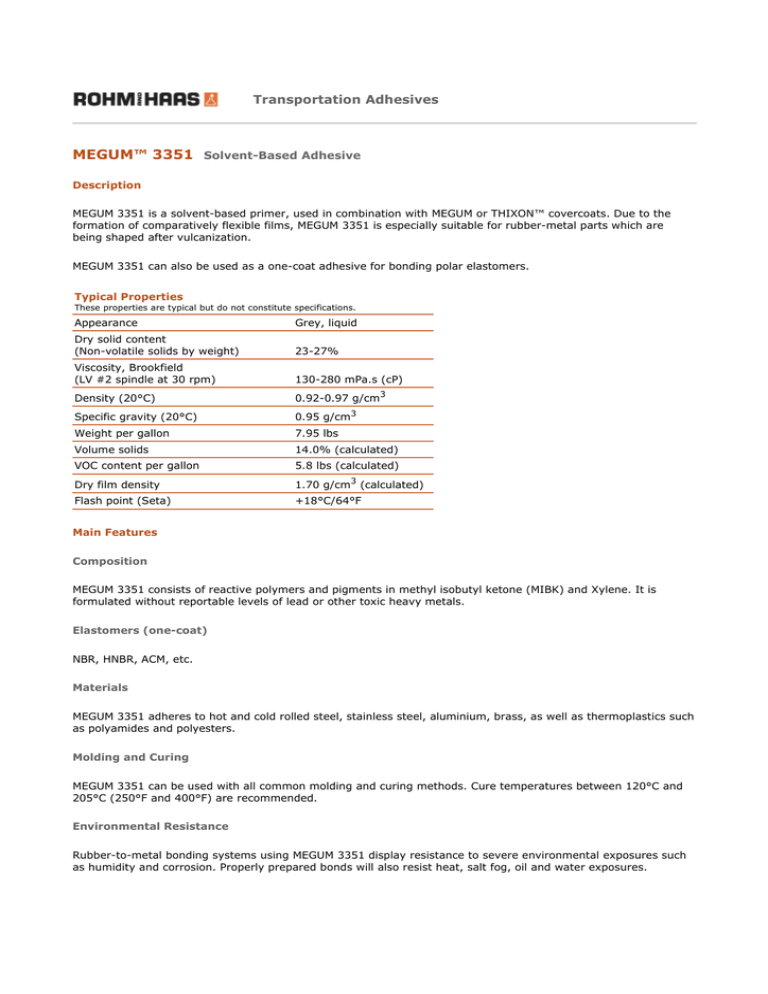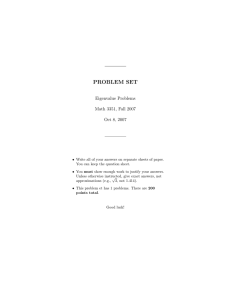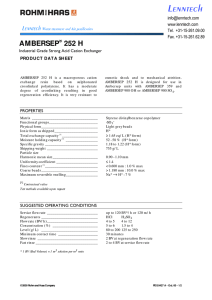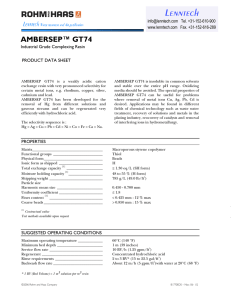
Transportation Adhesives
MEGUM™ 3351 Solvent-Based Adhesive
Description
MEGUM 3351 is a solvent-based primer, used in combination with MEGUM or THIXON™ covercoats. Due to the
formation of comparatively flexible films, MEGUM 3351 is especially suitable for rubber-metal parts which are
being shaped after vulcanization.
MEGUM 3351 can also be used as a one-coat adhesive for bonding polar elastomers.
Typical Properties
These properties are typical but do not constitute specifications.
Appearance
Grey, liquid
Dry solid content
(Non-volatile solids by weight)
23-27%
Viscosity, Brookfield
(LV #2 spindle at 30 rpm)
130-280 mPa.s (cP)
Density (20°C)
0.92-0.97 g/cm3
Specific gravity (20°C)
0.95 g/cm3
Weight per gallon
7.95 lbs
Volume solids
14.0% (calculated)
VOC content per gallon
5.8 lbs (calculated)
Dry film density
1.70 g/cm3 (calculated)
Flash point (Seta)
+18°C/64°F
Main Features
Composition
MEGUM 3351 consists of reactive polymers and pigments in methyl isobutyl ketone (MIBK) and Xylene. It is
formulated without reportable levels of lead or other toxic heavy metals.
Elastomers (one-coat)
NBR, HNBR, ACM, etc.
Materials
MEGUM 3351 adheres to hot and cold rolled steel, stainless steel, aluminium, brass, as well as thermoplastics such
as polyamides and polyesters.
Molding and Curing
MEGUM 3351 can be used with all common molding and curing methods. Cure temperatures between 120°C and
205°C (250°F and 400°F) are recommended.
Environmental Resistance
Rubber-to-metal bonding systems using MEGUM 3351 display resistance to severe environmental exposures such
as humidity and corrosion. Properly prepared bonds will also resist heat, salt fog, oil and water exposures.
Directions for Use
Preliminary Surface Preparation
Properly preparing the metal surface is essential to obtaining consistent, high quality bonds.
A mechanical or chemical pre-treatment should follow degreasing. Common pre-treatments are grit blasting and
phosphating. Further details are provided in our "Substrates Preparation Guide." Please contact your usual Rohm
and Haas commercial representative should you need a copy of this guide.
Mixing and Diluting
Diluents
Use ketones like MEK and MIBK, or 1:1 mixtures of ketones and aromatic solvents such as toluene or xylene.
First, thoroughly mix MEGUM 3351 with a propeller-type agitator. If diluting, slowly add the diluent to the adhesive
while mixing constantly.
Continue to mix MEGUM 3351 while spraying or dipping to keep the dispersed solids from settling to the bottom.
This will assure that a homogeneous mixture of the adhesive is applied.
Applying the Adhesive
MEGUM 3351 can be applied by brushing, dipping, spraying or other application methods. For spray application,
the viscosity can be reduced by either dilution and/or heating, e.g. to 40°C/105°F.
Application Methods
Brushing
Dilution ratio: Use undiluted.
Dipping
Dipping ratio: 1 p.b.w. bonding agent + 0.1-0.3 p.b.w. diluent.
Spraying with Air
Dilution ratio: 1 p.b.w. bonding agent + 0.4-1.0 p.b.w. diluent.
Viscosity: at 20°C/68°F.
10-40 mPa.s (cP) [Brookfield, LV#1 spindle at 60 rpm].
12-16 seconds [DIN-4-cup].
14-18 seconds [Ford-4-cup].
16-22 seconds [Zahn #2 cup].
Spray gun: Most spray equipment can be used.
Nozzle: e.g. 1.0 mm/0.04 in.
Air pressure: 2-4 bar/30-60 psi.
Drying Time
The drying time is approximately 30 minutes at 20°C/68°F.
Drying at higher temperatures will reduce drying time accordingly, e.g. 5 minutes force drying at 80°C/176°F.
Heated circulating air will further accelerate drying.
Suggested Dry Film Thickness
Apply MEGUM 3351 at a dry film thickness of 5 to 15 microns (0.2 to 0.6 mil.).
Dry Film Stability
MEGUM 3351 has excellent dry film stability. Inserts coated with MEGUM 3351 can be stored for several weeks, if
protected from contamination.
Theoretical Coverage
Applied at a dry film thickness of 10 microns (0.4 mil.), MEGUM 3351 will cover approximately 15 m2/kg (570
square feet/gallon).
Pre-bake Resistance
Adhesive-coated inserts can be pre-baked for up to 5 minutes at 160°C/320°F without adversely affecting bond
quality.
Cleaning
Cleaning should be done using recommended dilution solvents. Further details are given in our "General Guide to
Use." Please contact your usual Rohm and Haas commercial representative should you need a copy of this guide.
Storage and Handling
Keep containers tightly closed. Store them in a cool, dry, well-ventilated area away from heat, direct sunlight and
sources of ignition. Containers should be supported and grounded before opening, dispensing, mixing, pouring or
emptying.
Shelf Life
MEGUM 3351 has a shelf life of at least 24 months if stored unopened at temperatures below 25°C/77°F. If the
material is kept beyond its recommended shelf life, a quality control evaluation should be performed prior to use.
This check should include bond testing as well as evaluation of typical physical properties.
Safety Information
Material Safety Data Sheets (MSDS) are available for all Rohm and Haas products. These sheets contain important
information that you may need to protect your employees and customers against any known health and safety
hazards associated with our products. We recommend that you obtain copies of our MSDS from your local Rohm
and Haas technical representative before using our products in your facilities. We also suggest that you contact
your suppliers of other materials recommended for use with our products for appropriate health and safety
precautions before using them.
MEGUM is a trademark of Rohm and Haas Company.
These suggestions and data are based on information we believe to be reliable. They are offered in good faith, but without guarantee, as
conditions and methods of use of our products are beyond our control. We recommend that the prospective user determine the suitability of
our materials and suggestions before adopting them on a commercial scale.
Suggestions for uses of our products or the inclusion of descriptive material from patents and the citation of specific patents in this
publication should not be understood as recommending the use of our products in violation of any patent or as permission or license to use
any patents of the Rohm and Haas Company.
©Rohm and Haas, 2007
All rights reserved.
January 2006





